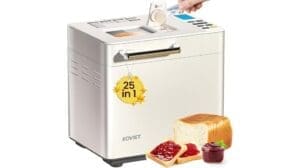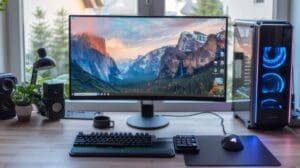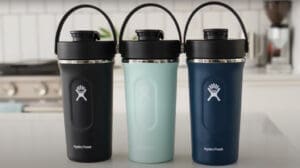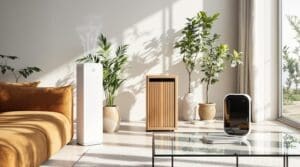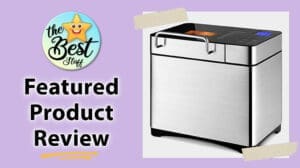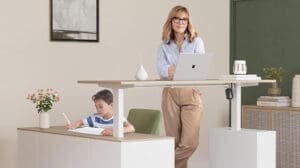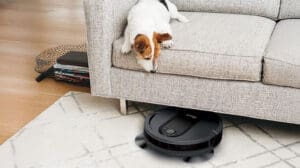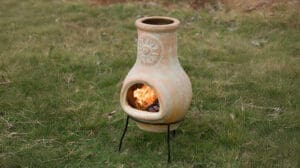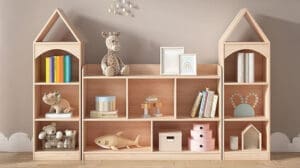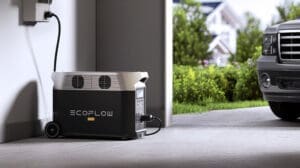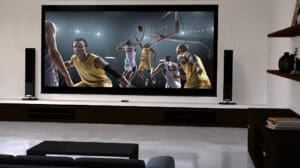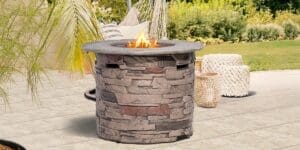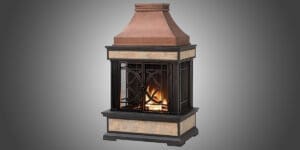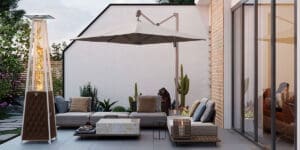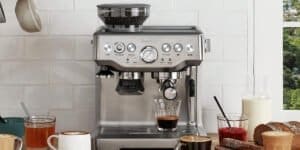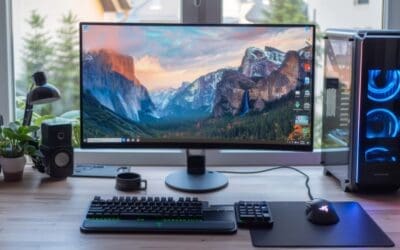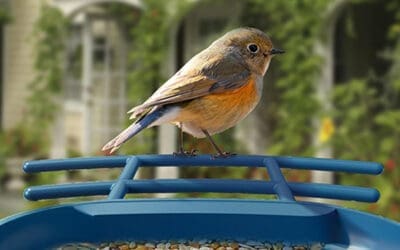When it comes to improving your indoor air quality, there are seven outstanding air purifiers that stand out. The Medify MA-40 and Nuwave Oxypure offer impressive filtration and coverage, while the Coway Airmega 400 and HATHASPACE HSP001 are ideal for quiet operation. If you’re looking for smart features, check out the Nuwave Forever and Jafända models. Each has its unique benefits, so stick around to discover which one’s the perfect fit for your home.
Some Key Points
- Consider purifiers with HEPA filters like the Medify MA-40, capturing 99.9% of particles for effective air cleaning.
- Look for models with large coverage areas, such as the Nuwave Oxypure, which purifies up to 2,934 sq ft in 60 minutes.
- Evaluate smart features, like air quality monitoring and app control, offered by options like the Nuwave Forever.
- Prioritize quiet operation for nighttime use; units like the HATHASPACE operate at a low 43 dB.
- Factor in maintenance costs and filter lifespan; washable filters can provide long-term savings over traditional filters.

Medify MA-40 Air Purifier with True HEPA H13 Filter
If you’re looking for an air purifier that tackles allergens and odors head-on, the Medify MA-40 Air Purifier with True HEPA H13 Filter is an excellent choice for your home. With the ability to clean spaces up to 1,793 sq ft in just an hour, it’s perfect for larger rooms. The HEPA H13 filter captures 99.9% of particles down to 0.1 microns, effectively removing dust, pollen, and smoke. You’ll appreciate the quiet operation, especially in sleep mode, and the user-friendly touch screen. Plus, its energy efficiency and lifetime warranty make it a smart investment for better air quality.
Best For: Those seeking an effective air purifier for large spaces that efficiently removes allergens, odors, and smoke while operating quietly.
Pros:
- Highly effective filtration: HEPA H13 filter captures 99.9% of particles down to 0.1 microns, improving indoor air quality significantly.
- Large coverage area: Cleans areas up to 1,793 sq ft in just one hour, suitable for larger rooms or open spaces.
- User-friendly features: Includes a touch screen panel, multiple fan speeds, sleep mode, and a filter replacement indicator for easy operation.
Cons:
- Quality control issues: Some users have reported receiving defective units, emphasizing the need for careful inspection upon delivery.
- Ionization feature concerns: While optional, some users question the efficacy of the ionizer and prefer not to use it.
- Filter replacement cost: Although high quality, replacement filters are priced around $69, which may be considered expensive by some.

Nuwave Oxypure Smart Air Purifier
The Nuwave Oxypure Smart Air Purifier is an excellent choice for families with pets or individuals prone to allergies. With its five-stage filtration system, it captures 100% of particles as small as 0.09 microns, effectively removing allergens, smoke, and odors. It purifies up to 2,934 ft² in just 60 minutes, making it perfect for large spaces. The smart features, including real-time air quality monitoring and remote control via a mobile app, add convenience. Plus, the washable pre-filters last up to 20 years, ensuring long-term use. Overall, it’s a solid investment for cleaner, fresher air in your home.
Best For: Families with pets and individuals prone to allergies seeking effective air purification in large spaces.
Pros:
- 5-stage filtration system effectively captures allergens, smoke, and odors, ensuring cleaner air.
- Smart features like real-time air quality monitoring and mobile app control provide convenience and ease of use.
- Washable and reusable pre-filters last up to 20 years, reducing long-term maintenance costs.
Cons:
- Higher price point compared to some basic air purifiers may be a consideration for budget-conscious buyers.
- Some users report noise at higher fan speeds, which may be disruptive in quiet environments.
- Replacement of True HEPA and Carbon filters needed annually may add to ongoing maintenance expenses.

Nuwave Forever Smart Air Purifier for Home
For those seeking a reliable solution to combat indoor air pollution, the Nuwave Forever Smart Air Purifier stands out with its advanced 7-stage filtration system. It captures 100% of particles down to 0.1 microns, ensuring cleaner air by removing smoke, dust, pollen, and pet dander. Covering up to 2,002 sq. ft. in just one hour, it’s perfect for large spaces. The auto mode adjusts the fan speed based on air quality, while the washable filters can last up to 20 years. With smart monitoring and a stylish design, you’ll breathe easier and enjoy a healthier home environment.
Best For: Those looking to improve indoor air quality in large spaces and seeking a long-lasting, efficient air purification solution.
Pros:
- Advanced 7-stage filtration captures 100% of particles down to 0.1 microns, including smoke, dust, and allergens.
- Washable and reusable filters can last up to 20 years, reducing the need for replacements and maintenance costs.
- Smart monitoring and adjustable settings allow for optimal performance and ease of use, adapting to real-time air quality.
Cons:
- Bulky design may require more space and could be perceived as less portable.
- Higher initial investment compared to standard air purifiers, which may deter budget-conscious consumers.
- Progressively louder operation on higher settings could be disruptive in quiet environments.

Coway AP-2015F Airmega 400 Smart Air Purifier
With its impressive coverage of 1,560 sq. ft. in just 30 minutes, the Coway AP-2015F Airmega 400 Smart Air Purifier stands out as an ideal choice for homeowners seeking effective air quality solutions. Its HyperCaptive Filtration System captures 99.999% of tiny particles and 99% of odors, making it perfect for allergy sufferers. You’ll appreciate the Smart Mode that adjusts fan speed based on air quality and the quiet operation, even on high settings. Plus, with filter alerts and energy-saving modes, keeping your air clean has never been easier or more efficient. Enjoy fresh air with minimal hassle!
Best For: Those seeking a powerful air purifier to alleviate allergy symptoms and maintain clean air in large spaces.
Pros:
- Covers large areas efficiently, cleaning up to 1,560 sq. ft. in 30 minutes.
- Smart features like automatic fan adjustments and energy-saving modes optimize performance.
- Quiet operation even on high settings, making it suitable for bedrooms and living spaces.
Cons:
- Initial Wi-Fi connectivity issues may require manual operation for some users.
- Air Quality Index (AQI) feature is unavailable in North America, limiting real-time air quality monitoring.
- Replacement filter costs can add up over time, though they are still more economical than allergy medications.

HATHASPACE HSP001 True HEPA Air Purifier for Home
Looking to improve air quality in your home? The HATHASPACE HSP001 True HEPA Air Purifier is a fantastic choice. It targets pollen, dust, pet dander, smoke, and odors, using an H11 HEPA filter that captures 99.9% of particles down to 0.3 microns. With coverage for up to 700 sq. ft., it’s perfect for bedrooms and larger spaces. Enjoy its quiet operation at just 43 dB, multiple fan speeds, and a handy remote control. The honeycomb activated-carbon filter effectively absorbs odors. Plus, with a 2-year warranty and responsive customer support, you can breathe easier knowing you’re well taken care of.
Best For: Individuals seeking to improve indoor air quality, particularly those affected by allergies or pet dander in medium to large living spaces.
Pros:
- Effective filtration with an H11 HEPA filter that captures 99.9% of particles down to 0.3 microns.
- Quiet operation at 43 dB, making it suitable for use in bedrooms and during nighttime.
- User-friendly features including a remote control, smart air quality sensor, and multiple fan speed options.
Cons:
- Requires a converter for use outside the USA due to American plug compatibility issues.
- Filter replacement needed every 4 months at an additional cost of around $30.
- Some users desire a fourth fan speed for enhanced performance in larger spaces.

Medify MA-50 Air Purifier V3.0
The Medify MA-50 Air Purifier V3.0 stands out as an excellent choice for homeowners seeking powerful air purification in large spaces. Covering up to 2,640 sq ft in just an hour, it effectively removes 99.7% of particles down to 0.1 microns, tackling allergens, odors, and smoke. You’ll appreciate its quiet operation, especially in bedrooms, where lower speeds are nearly silent. While it’s bulky and lacks remote control, the lifetime warranty and high performance make it a solid investment. Just keep in mind that filter replacements can be a bit pricey. Breathe easier with the Medify in your home!
Best For: Those seeking a powerful air purifier for large spaces that effectively reduces allergens and odors.
Pros:
- High coverage area: Cleans air in spaces up to 2,640 sq ft in just one hour.
- Effective filtration: Removes 99.7% of particles down to 0.1 microns, including allergens and odors.
- Quiet operation: Lower fan speeds are virtually silent, ideal for use in bedrooms.
Cons:
- Bulky design: Lacks a carrying handle, making it difficult to move between rooms.
- No remote control or smart features: Lacks convenience options such as Wi-Fi connectivity or auto odor detection.
- Filter replacement costs: Some users find the cost of replacement filters to be a concern.

Jafända Air Purifier for Home (Smart HEPA)
For those seeking a powerful solution to improve indoor air quality, the Jafända Air Purifier (Model JF888) stands out with its impressive coverage of up to 3800 square feet. With a high CADR of 488 CFM, it effectively cleans the air in large spaces quickly. You can control it remotely via Alexa or a mobile app, adjusting settings and monitoring air quality with ease. Its multi-layer filtration system captures dust, allergens, and odors, ensuring fresh air. Plus, its quiet operation makes it perfect for bedrooms. Enjoy peace of mind with responsive customer service and a two-year warranty.
Best For: Those looking for an effective air purification solution for large spaces and easy smart home integration.
Pros:
- High coverage area: Cleans air in spaces up to 3800 sq ft, making it suitable for large rooms or open areas.
- Smart features: Compatible with Alexa and mobile app for convenient remote control and monitoring.
- Quiet operation: Operates at low noise levels, ideal for bedrooms and nighttime use.
Cons:
- Filter replacement cost: Authentic Jafända filters may be more expensive compared to generic options.
- Size and weight: While designed for easy mobility, the unit’s size may be cumbersome for smaller spaces.
- Initial setup: Some users may find the initial Bluetooth setup process slightly challenging.


Factors to Consider When Choosing Quality Air Purifiers for Your Home
When you’re choosing an air purifier, consider the type of filtration system that best suits your needs, as well as the coverage area you require. Noise levels can also impact your comfort, especially if you plan to use it in a bedroom or office. Additionally, think about smart features and the maintenance involved, including filter lifespan, to guarantee you select a model that fits your lifestyle.
Filtration System Types
Choosing the right air purifier involves understanding different filtration system types and their effectiveness. HEPA filters are the gold standard, capturing 99.9% of particles as small as 0.1 microns, including allergens and pollutants. Some purifiers enhance this with multi-layer systems, combining pre-filters, activated carbon, and specialized filters like Bio-Guard to tackle a broader range of contaminants. If you’re looking to save money, consider washable and reusable filters that can last up to 20 years, considerably cutting long-term costs. Additionally, ozone removal filters can help reduce harmful emissions and VOC levels. Finally, check the Clean Air Delivery Rate (CADR) to gauge the purifier’s efficiency; higher CADR values mean faster air purification for your home.
Coverage Area Requirements
Understanding filtration system types sets the stage for considering coverage area requirements in your air purifier selection. You need to match the purifier’s coverage area with your room’s dimensions to guarantee effective air cleaning. Some models can handle spaces up to 2,934 sq ft in an hour, while others are suited for around 700 sq ft. A higher Clean Air Delivery Rate (CADR) indicates better efficiency, with top models reaching CADR ratings of 664.6 m³/h. It’s essential to assess the air changes per hour (ACH) to verify the purifier can filter the entire room’s air multiple times. This will help maintain cleaner air circulation, enhancing your home’s overall air quality. Choose wisely for peak performance!
Noise Level Considerations
How important is a quiet environment to you? If you value peace during activities like reading or sleeping, noise levels in air purifiers are essential. Models can range from a whisper-soft 22 dB to a disruptive 66 dB at maximum settings. Many purifiers offer sleep modes, dropping noise to around 43 dB for undisturbed nighttime use. Keep in mind that higher fan speeds usually mean louder operation, akin to a standard oscillating fan. If you have allergies or pets, you’ll likely prefer quieter units for continuous use without interruption. Always check manufacturer specifications, as some larger models may operate more quietly despite higher airflow rates. Finding the right balance can enhance your comfort notably.
Smart Features Integration
What features should you look for in a smart air purifier? First, consider WiFi connectivity, which lets you monitor and control your purifier remotely via a mobile app. This way, you can adjust settings and get notifications about air quality and filter maintenance. Look for models that automatically adjust fan speeds based on real-time air quality sensors to enhance both efficiency and purification. Integration with voice assistants like Alexa or Google Assistant offers hands-free convenience, allowing you to issue commands easily. Additionally, air quality and odor sensors provide immediate feedback, helping you decide when to activate or adjust your purifier. Finally, a user-friendly interface with touch screens and color-coded indicators makes managing air quality a breeze.
Maintenance and Filter Lifespan
When choosing an air purifier, maintenance and filter lifespan are crucial factors that can impact your home’s air quality and your wallet. Filters can vary considerably; some need replacing every 3 to 6 months, while others may last up to 20 years if they’re washable and reusable. Regular maintenance, like washing pre-filters monthly, can greatly extend filter life and boost efficiency. Don’t forget to take into account the cost of replacement filters, as prices can vary widely, affecting your long-term investment. Look for models with filter alerts and monitoring features to guarantee timely replacements. Some purifiers even use cumulative airflow metrics to determine when to change filters, enhancing operational efficiency and ensuring you breathe cleaner air consistently.
Energy Efficiency Ratings
Choosing an energy-efficient air purifier can considerably impact both your home’s air quality and your monthly utility bills. Look for models with Energy Star certification, which means they meet strict energy efficiency guidelines. Pay attention to the Clean Air Delivery Rate (CADR) per watt, as this indicates how well the purifier cleans air relative to its energy consumption. While lower wattage models can save on electricity, make sure they still provide effective air cleaning performance. Some purifiers also feature eco modes, adjusting fan speeds based on real-time air quality to reduce energy use. Finally, factor in the cost of filter replacements when calculating the long-term expenses of running your air purifier for peak efficiency and performance.
Design and Portability
While selecting an air purifier, the design and portability of the unit can greatly influence your experience. Consider the size and weight, as features like wheels or handles make it easier to move between rooms. You’ll want a model that fits seamlessly into your living space; compact units can save valuable floor space while still delivering effective air purification. A well-designed purifier allows for easy access to filters for maintenance and replacement, adding to your convenience. Look for adjustable airflow panels that direct clean air at various angles, enhancing airflow distribution throughout the room. Avoid bulky designs that complicate mobility and storage—choose a model that balances size and performance to suit your specific needs.
Price and Value Comparison
Finding the right air purifier involves more than just design and portability; price and value are key factors too. When you’re shopping, consider both the initial cost and the recurring expenses. While budget models start around $100, premium options can exceed $600, so weigh the features against your budget. Don’t forget replacement filter costs—some can run $30 to $69 every few months, while washable filters may last up to 20 years. Look for models with high Clean Air Delivery Rates (CADR) for better air cleaning efficiency, justifying a higher price. Brands with Energy Star certification can also save you money on energy bills. Ultimately, investing more upfront can lead to significant improvements in air quality and overall satisfaction.
Conclusion
In the words of Benjamin Franklin, “An ounce of prevention is worth a pound of cure.” Investing in a quality air purifier can greatly improve your home’s air quality, helping you and your family breathe easier. With options like the Medify and Nuwave models, you’ve got plenty to choose from. Just remember to reflect on your specific needs and space requirements. Take a step towards a healthier home environment today—you won’t regret it!
Some Questions & Answers

How Often Should I Replace the Filters in an Air Purifier?
You should replace the filters in your air purifier every 6 to 12 months, depending on usage and the type of filter. If you use it constantly or live in a polluted area, consider changing it more frequently. Always check the manufacturer’s recommendations, as some models have indicator lights that signal when it’s time for a replacement. Regularly replacing filters guarantees peak performance and helps maintain the quality of air in your home.
Can Air Purifiers Remove Odors and Smoke Effectively?
Did you know that up to 85% of indoor air pollutants can come from odors and smoke? Air purifiers can effectively remove these unwanted smells and particles, especially those equipped with activated carbon filters. These filters absorb smoke, pet odors, and cooking smells, improving your home’s air quality. By using an air purifier regularly, you’ll notice a fresher environment, making it easier to breathe and enjoy your space without lingering odors.
Are Air Purifiers Safe for Pets and Children?
Air purifiers are generally safe for pets and children, but it’s important to choose the right type. Look for models that use HEPA filters, as they effectively trap allergens without releasing harmful ozone. Avoid ionizers that can produce ozone, which may irritate sensitive lungs. Guarantee the purifier is placed in a well-ventilated area to maintain airflow. Always monitor your pets and kids around it, and consult your veterinarian or pediatrician if you have concerns.
Do Air Purifiers Consume a Lot of Electricity?
Air purifiers generally don’t consume a lot of electricity, especially when you consider their benefits. Most models use about 50 to 100 watts, similar to a light bulb. If you run it continuously, your energy bill might increase slightly, but it’s usually manageable. To save more, look for energy-efficient models that carry the Energy Star label. You’ll get cleaner air without a huge spike in your electricity costs.
How Loud Are Most Air Purifiers When in Operation?
Most air purifiers operate quietly, especially on lower settings. You’ll find that many models have noise levels comparable to a soft fan, typically ranging between 20 to 50 decibels. If you’re concerned about noise while sleeping or working, look for those labeled as “whisper-quiet.” Some even feature a “sleep mode” that reduces noise further, ensuring you breathe easier without disruption. Overall, you shouldn’t have to worry about them being too loud.






